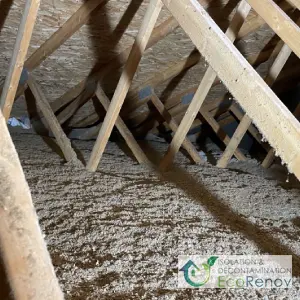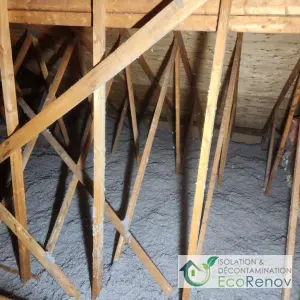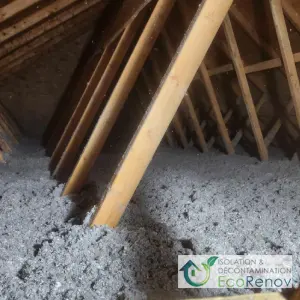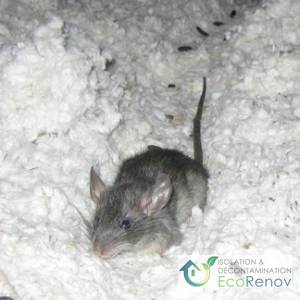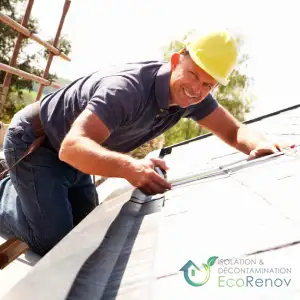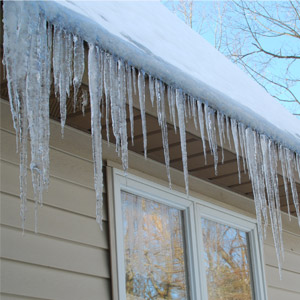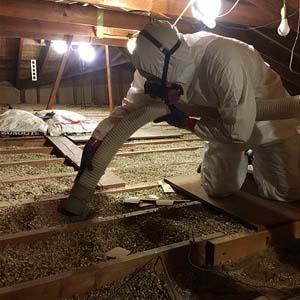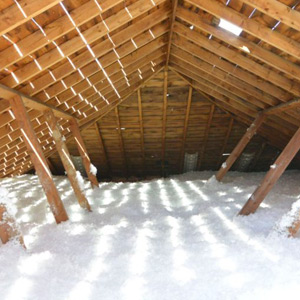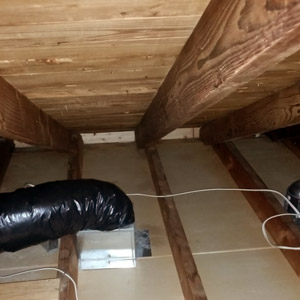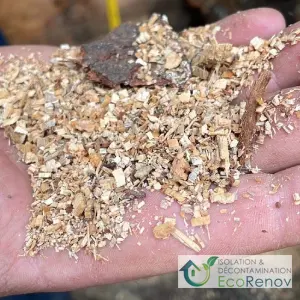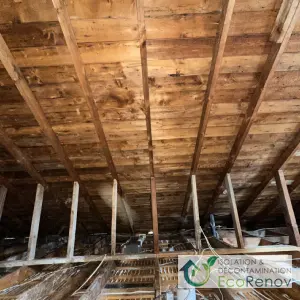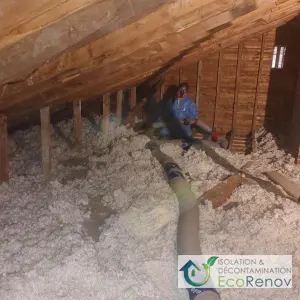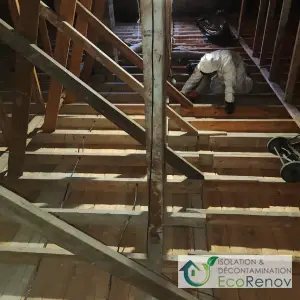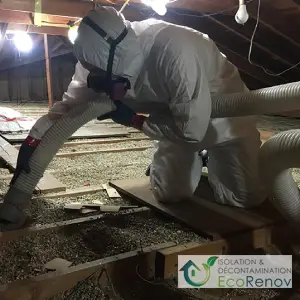To remove cellulose insulation from the attic may be necessary in certain cases to ensure a well-insulated attic for the comfort, energy efficiency, and overall health of your home. That’s why we offer specialized attic cellulose removal services to address various renovation and maintenance needs.
Why Remove Cellulose from the Attic?
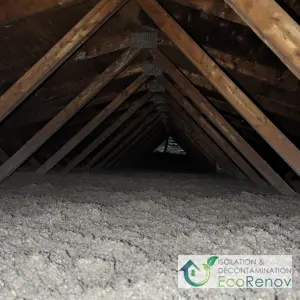 Interior Renovations: When undertaking interior renovations such as replacing the electrical system or installing recessed lighting, it’s often necessary to pass through the roof and ceiling. In these cases, existing cellulose insulation can obstruct the path and impede the process. To remove the cellulose ensures easy and safe access for building professionals while avoiding the risk of damaging the insulation.
Interior Renovations: When undertaking interior renovations such as replacing the electrical system or installing recessed lighting, it’s often necessary to pass through the roof and ceiling. In these cases, existing cellulose insulation can obstruct the path and impede the process. To remove the cellulose ensures easy and safe access for building professionals while avoiding the risk of damaging the insulation.- Water Infiltration: Roof leaks can compromise the effectiveness of cellulose insulation by making it damp and causing it to lose its insulating value. Therefore, it’s crucial to remove the wet cellulose to restore the integrity of the attic insulation and prevent any potential structural damage.
- Absence of Vapor Barrier: A vapor barrier in the attic is essential for regulating humidity transfer from the interior of the house to the attic space. Without a vapor barrier, humidity can accumulate in the insulation, promoting the growth of mold. Thus, attic mold removal becomes necessary, adding additional costs to property maintenance. Removing the cellulose, coupled with the installation of an appropriate vapor barrier, can prevent this issue and safeguard indoor air quality.
- Excess Humidity: Roofs exposed to excess humidity can lead to deterioration of cellulose insulation, thereby reducing its insulating effectiveness. To remove the damaged cellulose ensures that you can restore the thermal insulation of your attic and enhance the energy efficiency of your home.
- Rodent Infestation: The presence of rodents such as raccoons, birds, or bats in the attic can cause damage to the insulation and render it ineffective. Additionally, the droppings left by these animals can contaminate the cellulose and pose health risks, requiring thorough attic clean up after the rodent infestation. By extracting the contaminated cellulose and cleaning the attic, you can eliminate these issues and restore a safe and healthy environment.
- Asbestos Contamination: If cellulose insulation is mixed with vermiculite contaminated with asbestos, it’s imperative to completely remove the insulation and proceed with appropriate vermiculite removal to ensure the safety of your home and its occupants.
438-800-2046
EcoRenov: For Effective Cellulose Extraction
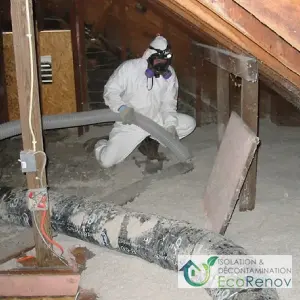
At EcoRenov, our qualified team is equipped to handle all aspects of the cellulose removal process in the attic, from initial assessment to the implementation of new insulation.
Firstly, we start with a detailed assessment of your attic to determine the condition of the existing cellulose, the presence of issues such as humidity or infestations, and the best solutions for your specific situation. If cellulose removal is necessary, our team conducts its replacement with professionalism and precision, ensuring to minimize disruptions in your home while delivering superior quality work.
Additionally, we can also install a vapor barrier in the attic to ensure additional protection against humidity and mold, thereby enhancing the durability and performance of the cellulose insulation. In case of rodent infestation or asbestos contamination, our team conducts a thorough attic cleaning, ensuring effective cellulose removal and performing appropriate attic mold removal to guarantee a safe and healthy environment.
At EcoRenov, customer satisfaction is our absolute priority. We are committed to providing high-quality services and lasting results to ensure the comfort and safety of your home. Contact us today by calling 438-800-2046 or fill out the online form for a quote request to remove cellulose from your attic. EcoRenov: your trusted contractor for attic insulation, attic and roof ventilation, attic mold removal, vermiculite removal, and roofing renovation.

Remove cellulose in the attic:
Talk with an insulation expert
Talk with an insulation expert
Cellulose Removal: Related Services

Get an Estimate to Remove the Cellulose from your Attic

Would You Like to Learn More About Insulation Removal? Check Out These Relevant Pages:
Remove Sawdust
To responsibly and effectively remove sawdust in your attic, EcoRenov is your trusted partner. We are dedicated to improving the comfort, safety, and energy efficiency of your home in the greater Montreal area. Therefore, we highlight the importance of removing sawdust from your attic and our services that can [...]
Cellulose Removal
To remove cellulose insulation from the attic may be necessary in certain cases to ensure a well-insulated attic for the comfort, energy efficiency, and overall health of your home. That's why we offer specialized attic cellulose removal services to address various renovation and maintenance needs. Why Remove Cellulose from [...]
Insulation Removal
To remove insulation from your attic can become essential in certain circumstances to ensure the safety, health, and energy efficiency of your home. Indeed, attic insulation is a crucial component of your house, helping to maintain a comfortable temperature and reduce annual electricity and heating costs. At EcoRenov, we [...]
Remove Loose Fill Insulation
To remove loose fill insulation during your renovation work may seem trivial. However, this task is important, especially when considering the multiple reasons why this intervention is necessary. As experts in attics, EcoRenov is familiar with the challenges and stakes associated with this operation. Why Remove Loose Fill Insulation [...]
Extraction of Asbestos-Free Vermiculite
Asbestos-free vermiculite, although once popular and widely used in the past for attic insulation, now raises many concerns due to its potential asbestos contamination. Back then, vermiculite was highly valued by homeowners for its cost-effectiveness, ease of installation, and the generous federal subsidies provided for roof insulation using vermiculite. [...]
Extraction of Vermiculite with Asbestos
Vermiculite with asbestos was widely popular in the past, particularly due to its ease of installation, cost-effectiveness, and government subsidies that encouraged homeowners to use it as attic insulation. However, subsequent research revealed that vermiculite could contain asbestos, a hazardous substance when disturbed. Asbestos was often mixed with vermiculite [...]

